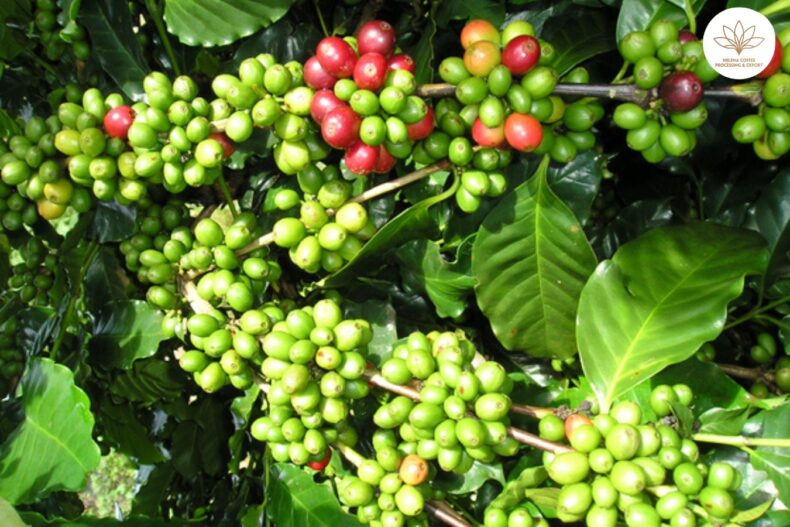
Oat milk becoming more popular latin america: Oat milk has risen to prominence as the most popular plant-based milk globally. It’s a staple in North America and Europe, stocked in cafes and coffee shops everywhere.
While oat milk is still growing in Latin America, it has clearly gained popularity in recent years. Despite the region’s established traditional plant-based drink cultures, oat milk has taken off for several reasons.
It remains to be seen whether oat milk consumption will reach the same levels as more mature plant milk markets. This growth could impact Latin America’s specialty coffee sector. To learn more, I spoke with three regional coffee professionals and a journalist.
Read our article exploring why more competitors didn’t use plant milks at the 2023 World Barista Championship to learn more about global plant milk trends.
A HISTORY OF MILK CONSUMPTION IN LATIN AMERICA
Here is one way I could rewrite that paragraph:
It’s easy to forget cow’s milk consumption is a relatively recent phenomenon globally. Just centuries ago, dairy milk was scarce in many regions where costs of cattle and equipment were prohibitively expensive for farmers and workers.

Demand for cow’s milk in North America and Europe far outpaced Latin America historically. But once pasteurization, transport, preservation, and refrigeration technologies advanced in Latin America, the dairy market boomed, fueled by government-backed campaigns and policies. The region’s dairy industry grew to play a huge economic role, mirroring the US and parts of Europe.
Prior to modern technologies and infrastructure enabling the expansion of dairy production and distribution networks, cow’s milk consumption was limited in Latin America. Widespread uptake was driven by government strategies to develop the dairy sector into a major regional industry, as had occurred in North America and Europe.
The traditional roots of plant-based food and drink
Here is one way I could rewrite that paragraph:
While cow’s milk was less common historically, plant-based beverages have long been staples in many indigenous Latin American cuisines. Though oat milk is relatively new, drinks like horchata have endured for centuries.
Introduced by Spanish colonists in the 16th century using tiger nuts, each country developed unique horchata recipes with native ingredients. Variations use morro seeds in El Salvador, rice in Mexico’s famous version, or ground peanuts and cashews elsewhere.
Soy milk also grew popular following 1940s school feeding programs. With major soybean production emerging in Brazil and other countries by the 1970s, soy gained traction regionally.
In summary, Latin America boasts rich culinary traditions of plant-based beverages, from indigenous horchata to the more recent adoption of soy milk. Though dairy consumption has increased with modernization, non-dairy options remain culturally significant and are seeing renewed interest.
PLANT MILK CONSUMPTION IN LATIN AMERICA TODAY
Here is one way I could rewrite that paragraph:
Interest in commercial plant milks has slowly grown in Latin America, with the market projected to reach US$3.24 billion by 2028 despite historical constraints. Higher manufacturing costs and lower average incomes have limited growth compared to North America and Europe where plant milks thrive.
However, as the region’s middle class expands, consumers seek higher-quality options. Health and sustainability are increasingly important to Latinos, many of whom are lactose intolerant. One study found up to 38% of Latin Americans have some degree of intolerance versus 28% in Europe.
Martín Dalla Zorza, journalist and author of La Cafeteguía coffee guide, says almond, soy, and oat are the most popular plant milks regionally. Coconut and rice milks have less traction. However, environmentally-minded consumers are drinking less soy milk. People choosing plant milks are more discerning about sustainability.
In summary, the plant milk market is growing steadily in Latin America as incomes rise and consumers prioritize health and social impact. While soy milk historically led, mounting environmental concerns are shifting preferences toward more sustainable options like oat.
An emerging oat milk market
Here is one way I could rewrite those paragraphs:
José Sojo, owner of Café Delirante in Bariloche, Argentina, says oat milk was unavailable commercially just three years ago. Hardly anyone had heard of it, so it wasn’t popular. Now oat milk comprises 10% of their drinks, helped by initially offering it at no extra cost to drive demand.
Pedro Lisboa, Head of Coffee Relations at Brazilian oat milk brand Nude, notes slower plant milk growth in Latin America versus 20%+ market share in the US. While soy milk led in Argentina, Brazil’s cashew milk market is substantial given domestic production. Plant milk variety is still limited outside major cities, with sparse supermarket shelf space.
In summary, oat milk’s availability and popularity have expanded rapidly in recent years across parts of Latin America, but market penetration lags behind the US. Soy and cashew milk have resonated in Argentina and Brazil specifically, but most consumers still have minimal exposure beyond big cities. More innovation in product offerings and retail distribution is needed to drive mass adoption of plant milks.
IMPACT ON THE LATIN AMERICAN SPECIALTY COFFEE SECTOR
Here is one way I could rewrite those paragraphs:
Pedro Lisboa and Martin Dalla Zorza agree that specialty coffee shops have been instrumental in introducing oat milk in Latin America. Martin believes the growing middle class trying plant milks abroad then demands more options back home.
“Specialty coffee adopted plant milks before other food businesses, especially where coffee with milk is common,” Martin says. “Trendy, tourist-heavy cafes pioneer plant milk locally.”

Barista-formulated oat milks are impossible to ignore. Alexander Appel, Nude co-founder, says brands are capitalizing on this with latte art packaging. They recognize the economic and branding benefits with baristas.
In summary, exposure to plant milks abroad and in cosmopolitan cafes has stimulated local demand. Specialty coffee’s early adoption has familiarized consumers with oat and other plant milks. Brands now actively target baristas with custom formulations and marketing to drive continued growth, given baristas’ influence on consumer preferences.
Potential challenges ahead
Here is one way I could rewrite that paragraph:
The Latin American plant milk market faces obstacles as it develops, with dairy still far more prevalent in cafes than plant-based options. Achieving parity will take time, but pathways exist as Martin Dalla Zorza explains.
Plant milks can mask or alter coffee flavors, requiring long-term palette re-education. Cold coffee presents the greatest opportunity. Milk and ice is novel for many Latin American consumers, so plant milks can enhance the experience.
Introducing plant milks through cold coffee exploits their novelty while obscuring some flavor impacts from hot brewing. This lets consumers adjust their palette gradually. With persistent promotion, the current dairy default can transition over time. Though change won’t be swift, cold coffee is an promising entry point for converting taste preferences.
FAQS:
- Mastering The Art Of Roast Milk Based Coffee Beverages
- Overview of Coffee Fundamentals: All about Coffee
- Revealing 4 Popular Coffee Roasting Levels And Its Flavors


